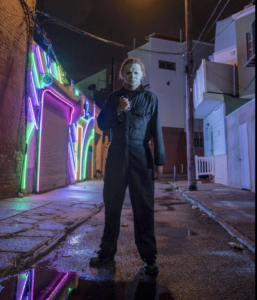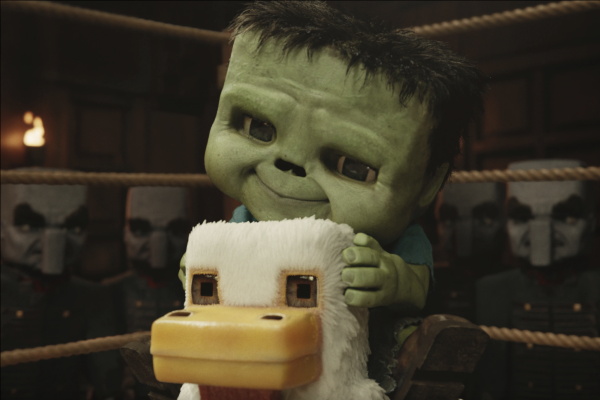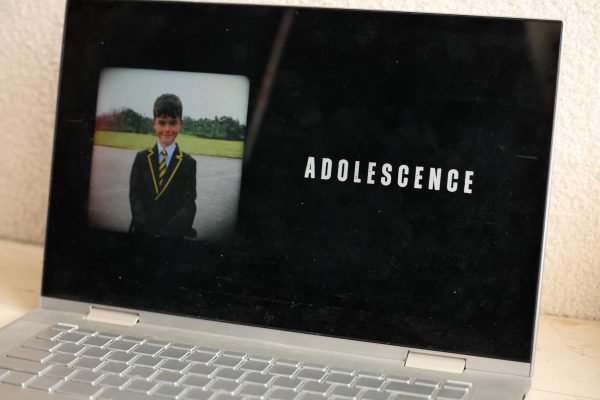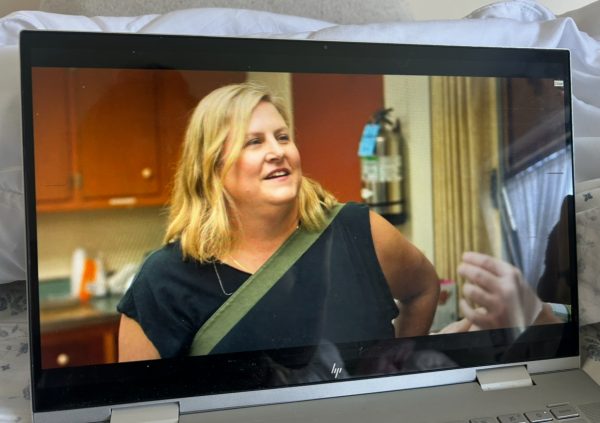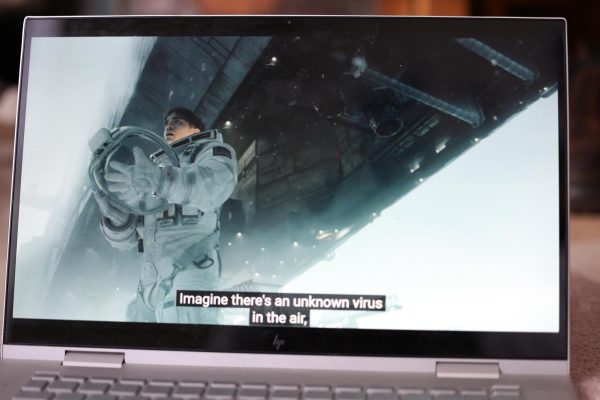Halloween Brings the Franchise Back to its Roots
By Matt Dillon
The newest Halloween is a direct sequel to the genre defining 1978 original film of the same name, taking place in the present day with the surviving characters returning alongside new ones. This is the same premise as the comically—named 1998 installment Halloween H20, though this film is much more competently made.
Even though the amount of poor sequels and remakes in the Halloween franchise scrapes the double digits, the original production of Halloween has a stronger foundation than its later films. The John Carpenter—directed original managed to make a slasher movie with substance, thanks to competent technical aspects and a strong atmosphere.
This new Halloween, thankfully, follows that template while leaving its own mark.
The film quickly establishes that Michael Myers, played by Nick Castle and James Jude Courtney, and his quarry, Laurie Strode, played by Jamie Lee Curtis, never moved past their first fateful encounter, even if the rest of the world has.
While the film goes out of its way to fit in call backs and references to the original, it is firmly a modern horror movie. This is noticeable in its sense of humor, though its comedy works as well as its scares. The more modern elements and new introductions help offset the film’s strong nostalgia.
Additionally, Halloween is far from mindless. Curtis unintentionally mimicking Michael’s mannerisms and behaviors from the first film works surprisingly well in establishing the new roles of both characters.
Halloween retains the most important element of the original film: the emphasis on building genuine characters. Curtis’ passionate performance drives the film, and her manic quest to protect her family manages to be as frightening as Michael himself in.
Judy Greer plays Laurie’s estranged adult daughter, whose bond with her mother was destroyed by Michael long before she ever came into contact with him. Michael himself has been returned to his original state, bereft of the clumsy additions made by the sequels.
True to Carpenter’s original vision, Michael Myers is a silent, unsettling paradox as he efficiently pursues an unknowable goal. Interestingly, Michael goes without his iconic mask for most first half of the film. While his face is never enturely shown, there is contrast between the distinctly human qualities, like the male pattern baldness, liver spots and injuries. Additionally, his monstrous relentlessness adds a new dimension to his character. The rest of the cast is considerably less interesting, but the film at least gives them some personality.
Halloween does not revel in the violence like its predecessors, as it makes sure to give characterization to even the throwaway characters. The film has a classic sense of horror, relying on tension above all else. The majority of the violence is masked through camerawork and editing, though the horrific aftermath is always shown. The few fully visible kills are incredibly gory to compensate. This, coupled with strong pacing and soundtrack, makes Halloween just as scary as the original.
On that note, John Carpenter returns for the score, which is an appropriate mix of the original songs with some more modern additions. It serves as a good representation of the film as a whole.
Halloween proves to be a surprisingly enjoyable film, managing to channel the spirit of the original without being a retread. The mix of humor and horror helps sell its theme that everyone is human. Even the monsters.
